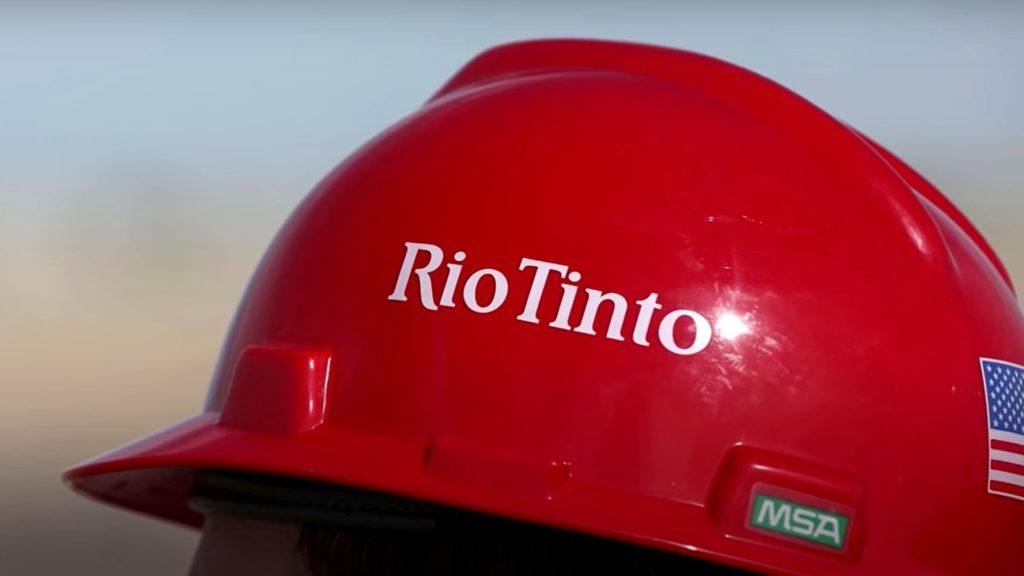
The government of Madagascar signed an agreement on 22 August with Anglo-Australian company Rio Tinto to renew its partnership in the operation of a controversial mining project that has threatened the health and livelihoods of nearby communities.
On 6 August, a group of UK-based campaigners called out the company in solidarity with the impacted Madagascan communities. Members of campaign groups Ekō, the Andrew Lees Trust (ALT UK), Publish What You Pay Madagascar (PWYP MG), and the London Mining Network delivered a 77,000-strong petition to Rio Tinto’s head office in London.
In particular, the groups are urging the mining corporation to stop its polluting practices at the site. The petition also demands that Rio Tinto commits to allow an independent investigation into issues of water contamination at the mining operation.
Rio Tinto mine harming communities
Since 2009, QIT Madagascar Minerals (QMM) – a company Rio Tinto jointly owns with the Madagascan state – has operated an ilmenite mine in Fort Dauphin, southern Madagascar. The company extracts the material from mineral-rich sands. Manufacturers use ilmenite to make a titanium dioxide-based white pigment found in paints, fabrics, plastics, paper, and cosmetic products.
The QMM mine has been the source of bitter conflict for local communities, who have experienced years of environmental, health, and livelihood impacts.
In 2019, the company admitted that its operations had breached a sensitive buffer zone around a lake that is in part a marshy wetland and estuary ecosystem. Local Madagascan communities draw water, fish and forage in the lake. The admission came in response to a study commissioned by environmental advocacy group the ALT UK which exposed the breach, considered a violation under Madagascan law.
The research that the ALT UK commissioned in 2019 identified that Rio Tinto had risked contaminating the nearby estuary with toxic mine tailings. Tailings refer to the waste material left behind after the mining process. Moreover, the research found:
elevated uranium levels in the water around the mine’s waste water discharge points, 50x times higher than World Health Organisation (WHO) safe drinking guidelines in some places.
As a result, ALT UK said that Rio Tinto had exposed:
local people who depend on the lakes and waterways for fishing, drinking water and other services, to health risks.
Toxic wastewater and dead fish
What’s more, following a series of cyclones and flash floods throughout February and March 2022, the mine’s tailings dam failed. The company spilled wastewater into the neighbouring Lake Besaroy. Rio Tinto then petitioned the regulator to allow it to discharge 264m gallons of toxic effluent into the watercourses. Suddenly, hundreds of dead fish were cropping up in the local water bodies. Of course, the company denied that there was a connection between its spills and the mass die-offs.
Challenging Tinto’s assessment, ALT UK environmental consultant Dr Stella Swanson told Mongabay that she was:
very confident the release of mine water was the cause of the fish kills
The fish deaths led the regional governor to declare a fishing ban in the area. This decimated the livelihoods of thousands of local fisherfolk.
Publish What You Pay Madagascar (PWYP MG) produced a separate study on the project. It documented the economic impacts of the mine on local inhabitants. The study suggested that the QMM mine’s impacts had caused rural communities to lose massive amounts of their usual revenues from livelihood activities such as agriculture, handicrafts, and – of course – fishing.
A milestone for Madagascan communities?
Naturally, Rio Tinto welcomed the renewed agreement with the Madagascan government, and spoke euphemistically of the future prospects for communities living near its mining project. Rio Tinto iron and titanium managing director Sophie Bergeron said:
This agreement is a significant milestone to support a long-term future for QMM and reaffirms our commitment to provide increased benefits for all parties, including the communities of Madagascar. We are privileged and honoured to be operating in Madagascar and we thank the country and its people for their trust.
However, in reality, Rio Tinto and the Madagascan government excluded local communities from the negotiations. A local community association petitioned the government to suspend the mine, but failed to come back to repeated requests for discussion. In response, residents of the region and union activists have mounted fierce resistance to the project.
Between 26 June and 3 July, thousands of protesters blocked the road to Tinto’s mine. Police violently repressed the demonstration, injuring 10 and arresting over 80 peaceful protesters. The London Mining Network told the Canary that, by 24 July, the police still held at least 27 activists in arbitrary detention.
The protests also followed the controversial implementation of a compensation scheme. In May 2022, Rio Tinto launched a conflict resolution process to compensate communities for over a decade of harm. However, the communities themselves said the process has been mired in human rights violations. They have accused the company of coercion, intimidation, land-grabbing, and providing insufficient sums.
In solidarity with these communities, the non-profits’ petition therefore calls for Rio Tinto to provide fair compensation to impacted residents – as they stated, it’s high time for the profiteering company to “clean up its act”.
